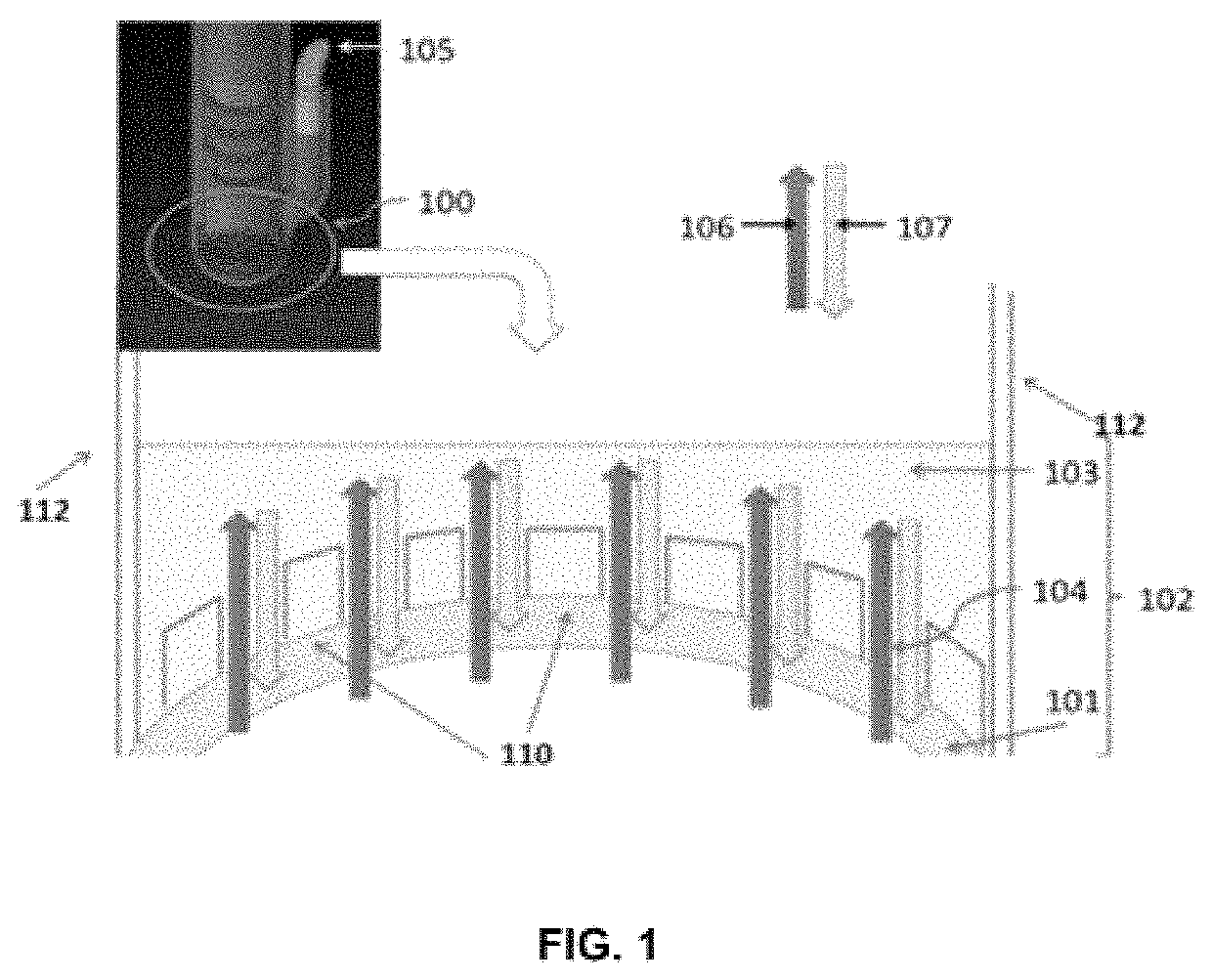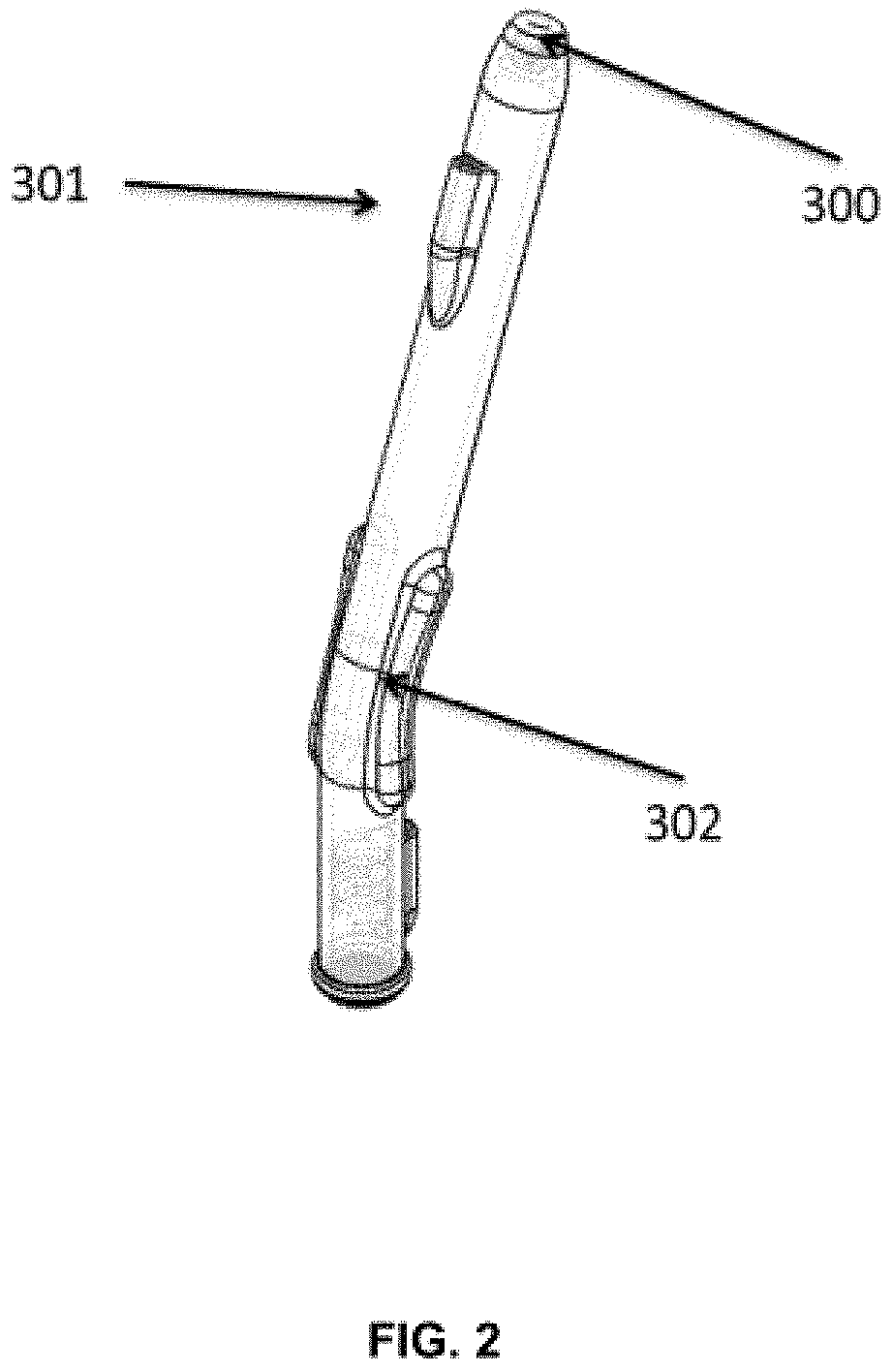Vacuum-assisted drug delivery device and method
a technology of vacuum injection and drug delivery, which is applied in the direction of medical devices, infusion needles, medical applicators, etc., can solve the problems of eye infections, eye infections, and eye infections that are difficult to treat with traditional methods
- Summary
- Abstract
- Description
- Claims
- Application Information
AI Technical Summary
Benefits of technology
Problems solved by technology
Method used
Image
Examples
Embodiment Construction
Brief Description of the Drawings
[0068]The figures herein are presented to aid in the understanding of the invention and are not intended nor should they be construed as limiting the scope of this invention in any manner. Thus, while the figures as such are directed to a device for vacuum-assisted non-intrusive delivery of a drug to the eye and the skin, it is understood that the figures may be modified in ways based on the disclosures herein to adapt to the vacuum-assisted, non-invasive delivery of drugs through the outer layer of any organ.
[0069]FIG. 1 is a schematic setting forth the mechanism of action of a vacuum delivery system.
[0070]FIG. 2 is a drawing of the side of the device. Handles are on the radii of the curve. The vacuum tube is on the proximal end of the handle.
[0071]FIG. 3 is a cut-out view through the center axis. The proximal or backward flow inhibitor or stepped diffusor is shown which keeps solutes from being retracted by the applied vacuum. The solute inlet is j...
PUM
 Login to View More
Login to View More Abstract
Description
Claims
Application Information
 Login to View More
Login to View More - R&D Engineer
- R&D Manager
- IP Professional
- Industry Leading Data Capabilities
- Powerful AI technology
- Patent DNA Extraction
Browse by: Latest US Patents, China's latest patents, Technical Efficacy Thesaurus, Application Domain, Technology Topic, Popular Technical Reports.
© 2024 PatSnap. All rights reserved.Legal|Privacy policy|Modern Slavery Act Transparency Statement|Sitemap|About US| Contact US: help@patsnap.com










